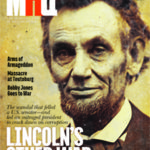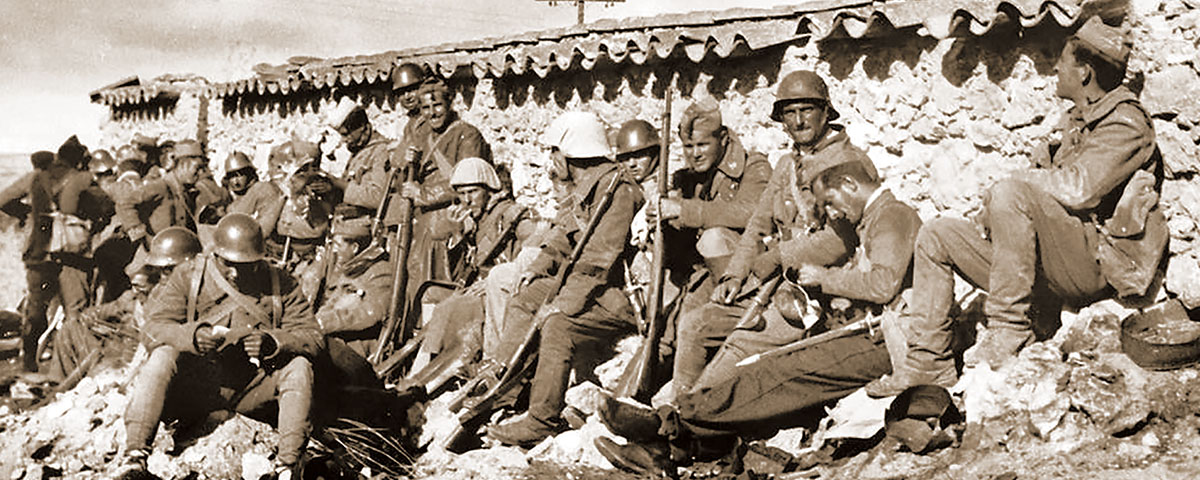FREDERICK GRIFFIN WAS BORN IN CASTLEBLAYNEY, IRELAND, in 1889 and came to Canada when he was 23. Within a year he was working for the Toronto Star, where he would rise from library messenger boy and filing clerk to a coveted position as the newspaper’s marquee feature writer. Griffin—“Griff,” as he was known to colleagues—covered some of the biggest stories of the day and interviewed such luminaries as Emma Goldman and Winston Churchill. In the summer of 1932 the Star sent Griffin, whom it lauded as its “most experienced and gifted news man,” to the Soviet Union, where he chronicled what his newspaper would bill “a great and disturbing experiment.” For eight weeks Griffin avoided formal censorship by mailing his dispatches home.
In December 1936 Griffin traveled to Madrid to cover the Spanish Civil War—one of the most violent sieges of a civilian population in modern history. In story after story he painted vivid and compelling portraits for his readers back home of the bombing raids that would leave the capital city in ruins. The story below, printed in the December 17, 1936, edition of the Star, showcases Griffin’s gifts as reporter and writer.
In 1942 Griffin returned to Europe as the Toronto Star’s chief war correspondent. He stayed overseas through the rest of the war, filing dispatches from Dunkirk and Dieppe, traveling with the 1st Canadian Infantry Division through Sicily, and reporting from a troopship as the Allies landed at Juno Beach on D-Day. “For more than a month during the fiercest fighting in Holland,” the Maple Leaf, a newspaper for Canadian armed forces, would later observe, “Griffin drove 160 miles a day in an open jeep in foul weather to cover the battle lines, living on cold, bully beef lunches and returning to his billet at night to write and cable his stories.”
In 1946, less than a year after he’d returned from covering World War II, Griffin died suddenly from a heart attack while shoveling snow at his home in Toronto. He was 56.
Madrid, Dec. 6—Madrid received a bad downtown scare early this afternoon when a flotilla of some 40 enemy aeroplanes appeared overhead in a mist. Fifteen were tri-motor bombers, the others pursuit craft. Their drone filled the air angrily and everyone expected that a fearful blasting was imminent.
It happened not, as the drone faded away to the northwest where the airmen dropped some 60 bombs over the village of Majadahonda, five miles out near Boadilla del Monte, where two days’ fighting still continues.
A fearful scene was reported, as Majadahonda was caught unprepared and the villagers streaked from their homes as explosions made the place a hell. Ambulances raced from the capital to care for an unknown number of wounded. Many were believed killed.
After this savage raid, the first for some days, the bombers came back via the Cuatra Caminos and gave this badly ravaged working-class area another dose of high explosives.
The unexpected appearance of the insurgent bombers, despite the wretched visibility, attacking northwest of Madrid lends color to the belief that Gen. [Francisco] Franco’s current attack on the line from the city toward the Guadarrama mountains portends an attempt to swing around to the north and to try such entry instead of risking a frontal assault on the Manzanares line [the Republican forces formed a defensive line on the Manzanares river as they fought to prevent the Nationalists from entering Madrid] and the city’s strong street battlements on that side.
Franco’s current northwest activities are along the sector commanded by Gen. Emil Kleber, a naturalized Canadian. Apparently the loyalist line has held stubbornly from University City for 10 miles out at four points where Franco used tanks supported by concentrated machine-gun and rifle fire.
Quiet is again said to have settled along the line, with little change of position except at Boadilla de Monte, where the fight is unfinished.
Meanwhile, except in the blasted, barricaded western war zone proper, Madrid seeks to carry on as normally as possible under the tragic circumstances. Services, including water, electricity, trams, and subways, operate, though there is no gas, heat, or trains. Every day gangs clear the debris and keep most of the streets as clear as in peace-time.
The Puerta Del Sol, the city tramways junctions, ripped three weeks ago by three huge bomb hits, with three or four adjacent streets, has been refilled and repaired, tracks [have been] relaid, and cars have resumed through traffic.
The underground metro runs, giving almost full services again. The lower levels of the metro still hold many refugees living and sleeping on platforms, each family’s bedding rolled against a wall during the day.
The most dismal place in Madrid is the great post office on the famous Alcala, with every pane of glass, every window, shattered. Like a dismal barn, chill drafts sift through the unheated edifice, but clerks do business with the inflocking public.
The Cinema Madrid-Paris advertises that it is reopening at 11 a.m. for continuous daily showings with propaganda films, making five movie theaters operating, most of them showing Russian pictures. The Capital [Theatre] on the Gran Via is filled with crowds constantly to see Chapieff, the Red Guerrilla Fighter.
Such is the unquenchable spirit of hope and defiance which animates dark Madrid. I never cease marveling at the courage and fatalism of clerks and others serving in stores adjacent to buildings which have been blown to ruin as a fearful example of their possible fate. MHQ
[hr]
This article appears in the Spring 2018 issue (Vol. 30, No. 3) of MHQ—The Quarterly Journal of Military History with the headline: Siege Mentality
Want to have the lavishly illustrated, premium-quality print edition of MHQ delivered directly to you four times a year? Subscribe now at special savings!






